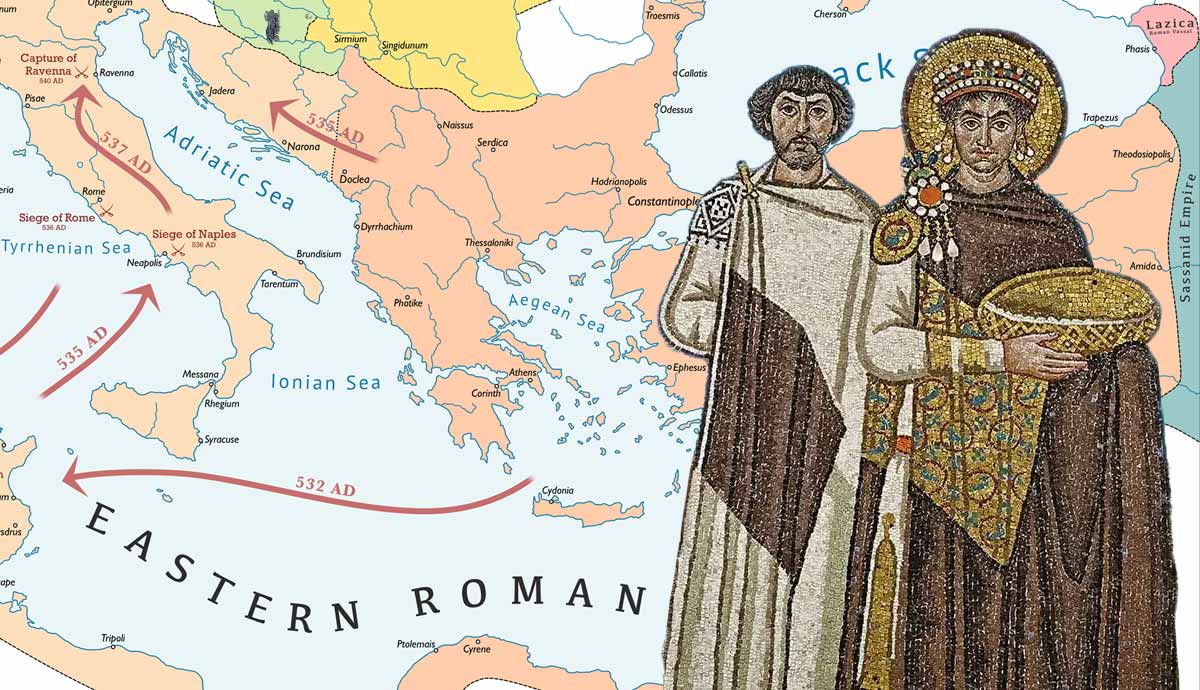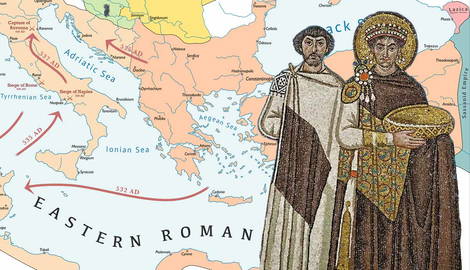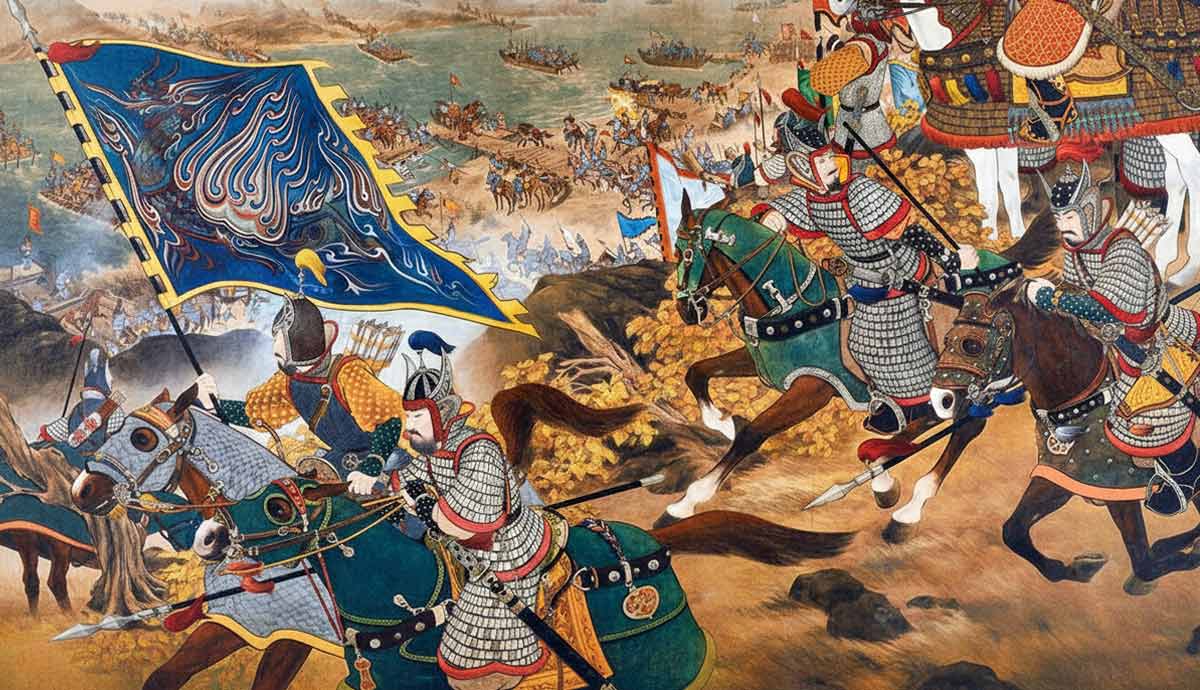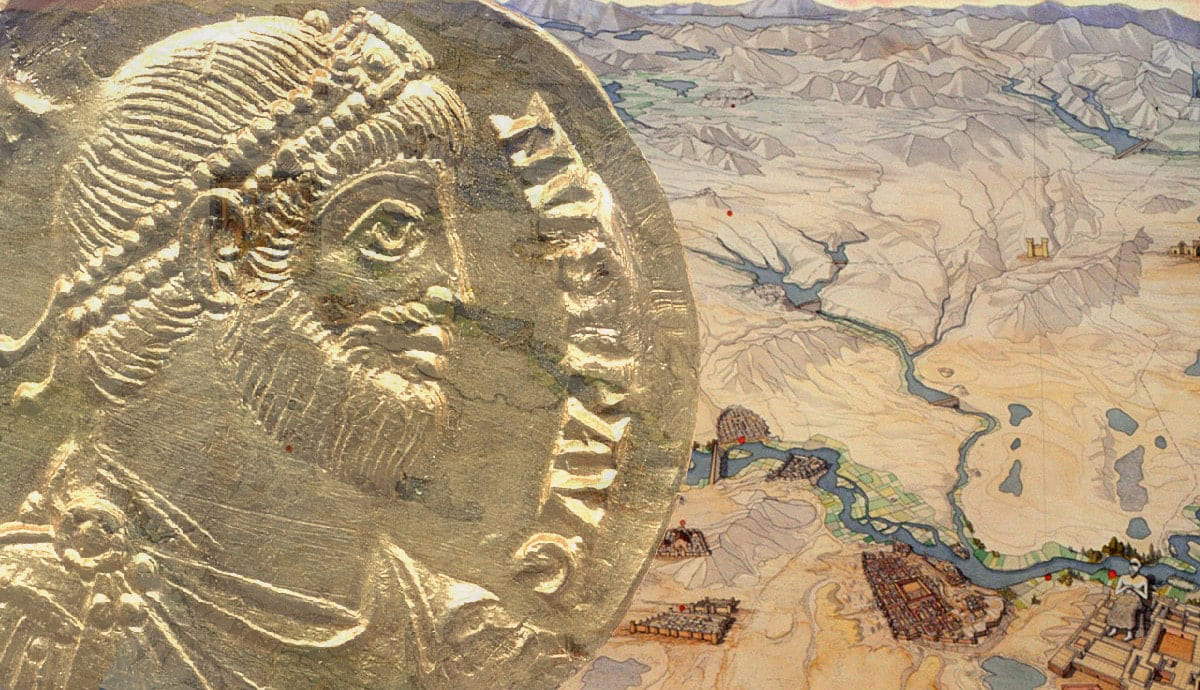
The “Reconquest” of the Roman West was one of the major accomplishments of Emperor Justinian I (527-565). Following a series of successful campaigns – the “Justinian Reconquest” – the Roman Empire restored control over northern Africa, Italy and southern Spain. Once again, the Mediterranean was Mare Nostrum, and the Roman navy dominated the inner sea. However, the protracted warfare and the deadly plague outbreak ruined the imperial economy and depleted its manpower. In addition, Justinian’s wars overstretched the Roman Empire, leaving his successors with the difficult task of defending the vast territory with limited resources. Despite these challenges, “Justinian’s Reconquest” was a significant achievement that restored, albeit briefly, the power and influence of Constantinople in the West.
The Wars That Made Justinian’s Reconquest Possible

Since the mid-fifth century CE, and the fall of Rome, the emperors in Constantinople dreamed of the reconquest of the former Roman territories lost to the barbarian kingdoms. However, the constant threat from Sassanid Persia in the East and the barbarian incursions at the Danubian frontier tied down most of the troops. All that changed during the reign of emperor Justinian I. His predecessors left Justinian with a full treasury, a stable government, and a disciplined, professional army. Justinian also inherited the war against Persia, a traditional rival of the Roman Empire since the times of Crassus. However, the Roman victories at Dara and Satala led to the “Eternal Peace” with Persia in 532 CE. Justinian could finally focus on his lifelong aim – the reconquest of the Roman West.
Belisarius Recaptured Africa by Storm

Following the regime change in the Vandal Kingdom of Africa, Justinian decided to act. In 533 CE, Belisarius and his troops landed in Africa unopposed. Belisarius led a small expeditionary force, 15 000 strong. However, despite being outnumbered and on hostile ground, Belisarius was able to outmaneuver and defeat the much stronger enemy. In a lighting campaign, the Romans crushed the Vandal army of king Gelimer in the battles of Ad Decimum and Tricamarum. Belisarius’ triumph was complete. The Vandal Kingdom was no more, and the Romans restored their control over northern Africa and its ancient capital – Carthage – one of the most important towns in the Mediterranean. In 534, Belisarius landed on Sicily and took the island from the Ostrogoths with minimal effort. And just like that, within a year, both North Africa and Sicily were back in the imperial fold.
The Gothic Wars and Fall of Ravenna

Not to lose momentum, Emperor Justinian continued the reconquest, focusing on the ancient imperial heartland – Italy. Once again, the emperor used the dynastic squabbles to justify the invasion. Once again, general Belisarius managed the impossible, having only a small force (8,000 men) at his disposal. In 536 CE, only a year after the Gothic war started, Rome was again in the imperial hands. By 540, Belisarius was in control of most of the Italian peninsula, and the Roman army reached Ravenna, the capital of Ostrogoth Kingdom. To avoid further bloodshed and end the war, Belisarius resorted to a ruse. When the Goths offered him a crown, Belisarius feigned acceptance and entered the city, only to proclaim the capture of Ravenna in emperor Justinian’s name.
However, the War in Italy Was Far from Over

It seemed that the Roman victory was complete. Ostrogoth King Witigis was captured and shipped to Constantinople, along with the entire Gothic treasury. Justinian celebrated the reconquest of Italy with an epic triumph. However, the Gothic war was far from over. After Belisarius departed Italy, the new Ostrogoth leader – Totila – consolidated his forces and counterattacked. The Goths had several factors on their side. The renewed war with Sassanid Persia left the Roman army in Italy without badly needed reinforcements. In addition, the incompetence and bickering within the imperial high command undermined the army’s capability and discipline. Perhaps most importantly, the plague outbreak devastated and depopulated the territories of the Roman Empire, ruining its economy, and weakening the military.
Justinian’s Plague Hampered the Reconquest

The so-called Justinian plague arrived at the Egyptian port of Pelusium in 541, rapidly spreading through the Mediterranean. After it arrived in Constantinople in 542, it began killing thousands of people daily. According to historian Procopius, people died faster than they could be buried. At the peak of the pandemic, the authorities struggled to dispose of the bodies, stacking them like firewood in make-shift mass graves or cramming them in vacant defensive towers. By the time the Plague of Justinian petered out, nearly half Constantinople populace was dead. The disease spread all across the Empire, causing widespread famine and devastation. The plague and its aftershocks remained a drag on the Roman economy long after the initial wave had passed.
Italy, Once a Wealthy Region, Was Ruined by War

After a decade of bloody war, in 552, the Roman army led by eunuch Narses finally defeated the Ostrogoths and Totila at the battles of Busta Gallorum and Mons Lactarius. The Gothic war was finally over, and the Ostrogoth Kingdom ceased to exist. The Romans were now undisputed masters of Italy. Yet, Italy was only a shadow of its former self. Years of protracted warfare, and plague, devastated the peninsula and the city of Rome. The depleted army could hardly offer any serious resistance to the new invaders. By 568, only three years after Justinian’s death, northern Italy was in the hands of the Lombards.
Justinian’s Reconquest

Justinian’s Reconquest was the last attempt of an emperor in Constantinople to restore the imperial control of the West. An ambitious undertaking, it bolstered the prestige of emperor Justinian and the Roman Empire. For the first time in half a century, the Romans controlled a vast area stretching from southern Spain to Mesopotamia and from the Alps to Egypt. Yet, the reconquest was a short-lasted affair. In addition, it drained the limited resources and overextended the empire. Moreover, the deadly plague weakened the overburdened economy and drained military manpower. Thus, it is unsurprising that Justinian’s successors could hardly hold the new possessions.
Less than a century after its reconquest, the Romans had to abandon Spain. In Italy, the Lombards continued their advance, until the fall of Ravenna in 751. Roman control over North Africa was the most stable. However, the entire region, including Egypt, would fall to the Arabs following the disaster at Yarmuk in the late seventh century.










